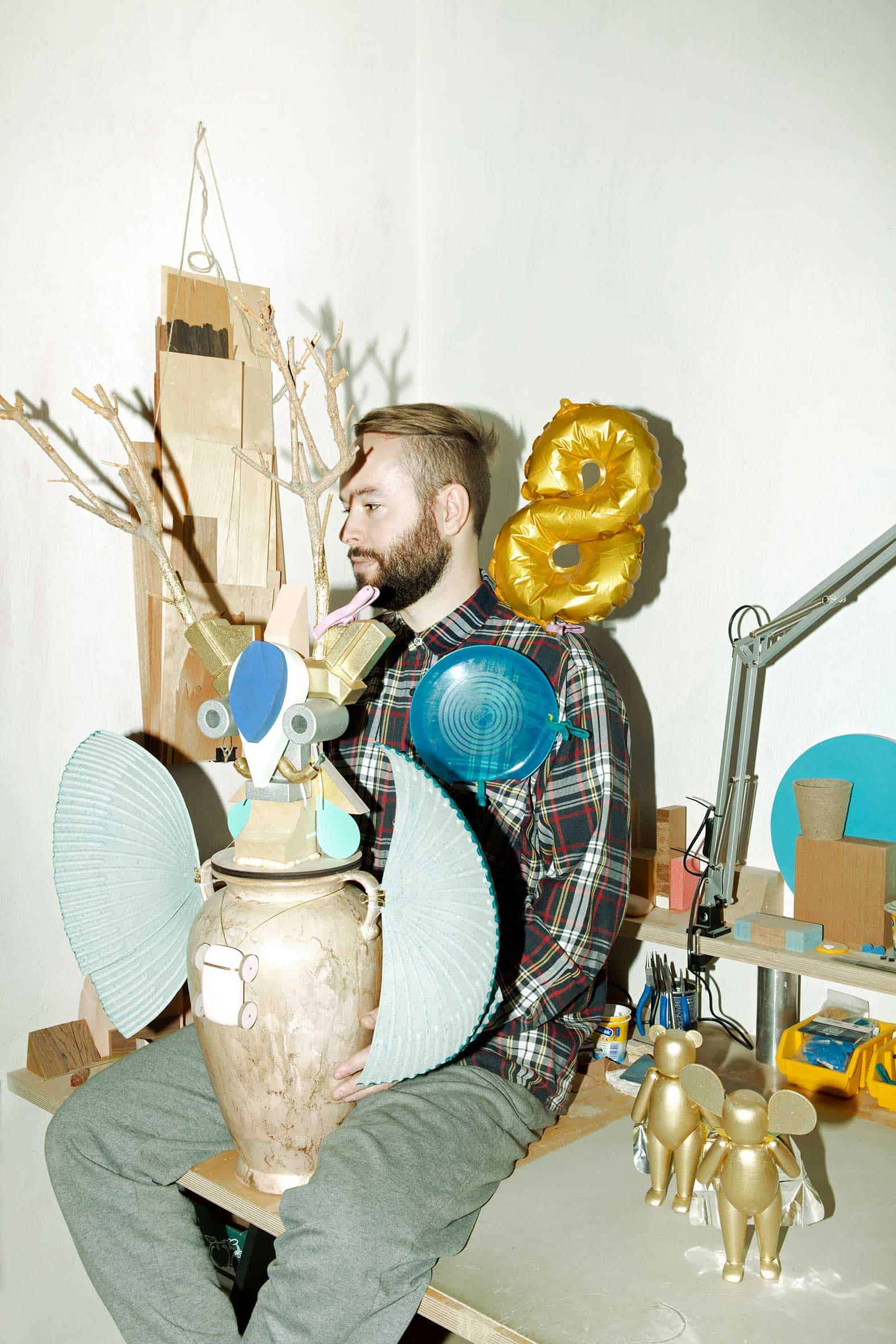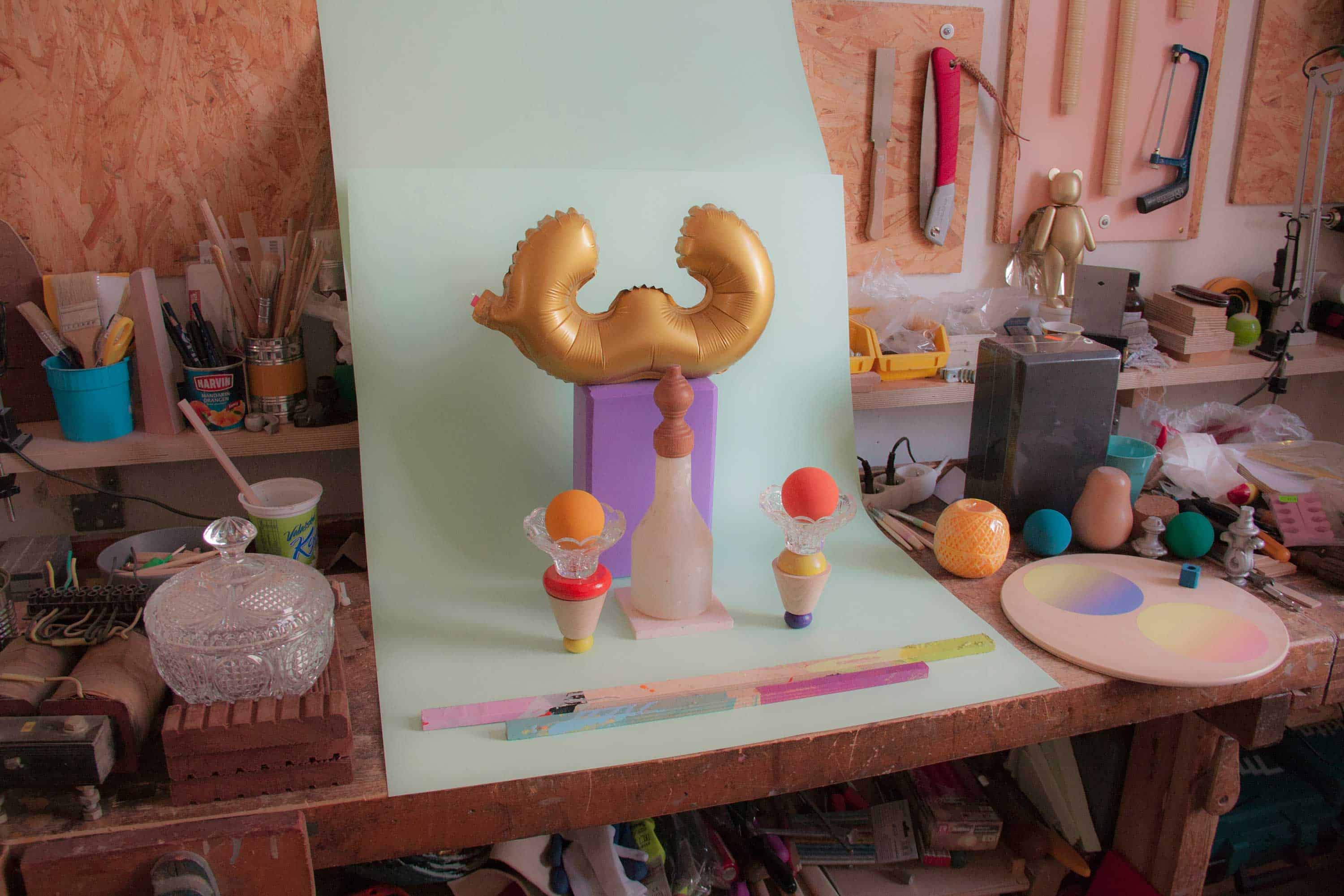Michal Strach is the young Czech designer and alumnus of the Prague University UMPRUM. He talks about his creative process, some of his pragmatic decisions and work created from scraps.
Michalina Sablik: Designers often try to address burning issues, such as sustainability, ecology, friendliness and smart cities, to make our lives easier. Your recent design project “Pure Vandalism” is more focused on pure form and playfulness. It seems to me that your work must be pure joy? Am I right?
Michal Strach: I believe that our personal needs underpin the core of our work. Our assignments demands it is that way. With this project I was given a chance to play and I was glad to do so. I am open to different kinds of projects. It makes sense to focus on challenging global problems in cooperation with the companies that are strong enough to be heard and influence. I care about form and aesthetics as my primary commitment. Joy comes whenever I spend some time in the workshop. Different skills are required as a product changes under my hands; I do love it. The working tempo is also crucial. “Pure Vandalism” was created in two weeks. During that time, I was also finishing my “Re pello Formule” project. There was no time for computer drawings and I could work spontaneously and directly with the material itself. That is very important to me.
Michalina Sablik: You are fascinated by the variety of forms and materials created and produced by humans. Today everything you can imagine is at your fingertips – available in shops or on the Internet. In some of your recent projects, you give up producing new objects and you compose them from ready-made objects. Why? What is your philosophy?
Michal Strach: There is not a particular philosophy behind it. The reason is more pragmatic. I naively thought I could start manufacturing my “toy” designs myself after graduation. That process showed me my limits. I gave up my effort to produce “Lupus in Fabula” and focused on an artistic installation “Maleficent Maelstrom”.
I decided to change my approach to my work only a few weeks before Designblok 2017. I had nothing to show but I could not resign from exhibiting my work. I had given up my own manufacturing attempts but it broadened my horizons. I had one vase which was supposed to be in my little herb garden, and luckily I had aluminium casts resembling face parts from a local company. These items defined my “Maleficent Maelstrom” project. I also recycled most of the items from my previous works to build the whole installation. It was so natural to use them because they were all around me and they fit into the composition well. I use existing items as they provoke my imagination. Insignificant parts can give direction to the whole project. It feels like playing with a building kit, all these diverse pieces you can design the final look with. It is so convenient. My “ready-mades” create the visual image of my work.
Michalina Sablik: Where do you get all the materials?
Michal Strach: I have been saving the material shreds since my first year at AAAD (Academy of Arts, Architecture and Design in Prague). Starting with parts from different kinds of paper, wood and old material models and followed by capturing everything nice that would otherwise be thrown out. Nowadays I extend my collection by shopping in bazaars and through cooperation with manufacturers. I gradually realised my diploma work was literally created from scraps.
Michalina Sablik: How is your activity different from the work of a visual artist or a contemporary sculptor? Do your objects have any application?
Michal Strach: I have categorised them like spatial sketches for myself. They could be seen as visual models with potential for future application. They could create a platform for designing specific products, and if manipulated in a specific way, they could result in a children’s toy, interior accessories, etc. They are like visual patterns waiting to be applied and manufactured. In that way, they are a part of the designing process. On their own, in the gallery space, they might be accepted as visual art.
Michalina Sablik: There is a lot of humour and fun in your objects. They refer to topics connected with childhood, playfulness, creating inner worlds. Some of them like “Brick Jewel” are unpractical in a funny way. Why?
Michal Strach: During the first term at AAAD we were given a task to collaborate with a student from the fashion design studio. Unfortunately, I picked a girl who did not want to do anything new together but continue working for her label with her colleague. I was told to create any jewel and find a way in which we could connect our approaches later. Rather than doing a specific jewel, I created an artificial jewel box to be sure my work would fit to any design my partners could come up with. I chained that box to its owner so nobody could steal it. She also became a “slave to the beauty” at the same moment. It was quite fun to learn that an upcoming fashion show will include a presentation of our collaboration.
Michalina Sablik: How do you start working on a new project? What inspires you?
Michal Strach: It mostly begins with a task, when it amuses me, and the ideas start to flow instantly. The tough part comes later when I am supposed to manage manufacturing. I love situations where I can do most of the job myself, or working in collaboration with a manufacturer who does the job for me. I also have my own small projects that revolve around gardening. I think nature inspires me and what’s more, growing herbs, houseleeks and vegetables and taking care of the garden releases my work tension.
Michalina Sablik: What do you mean when you say that you work like a composer? Is randomness an important value for you in creating your objects?
Michal Strach: I find freedom in randomness. I feel free while “composing”. It is a period of time when I am naturally forced not “to think”. It brings me moments of pure joy. There are no rules, just endless possibilities. In these moments I feel like I am getting closer to myself. I think the greatest way that an artist can contribute to society is to reveal his own unique perspective of being. Each profession is defined by its own natural way of expression. I believe the artist is obligated to bring new visual schemes to the audience. It is inevitable to know our inner self. Spontaneous creating might open the subconscious as we learnt from the Surrealists’ automatic drawing method. “Composing” is my way of achieving that goal.
Edited by Lisa Barham















